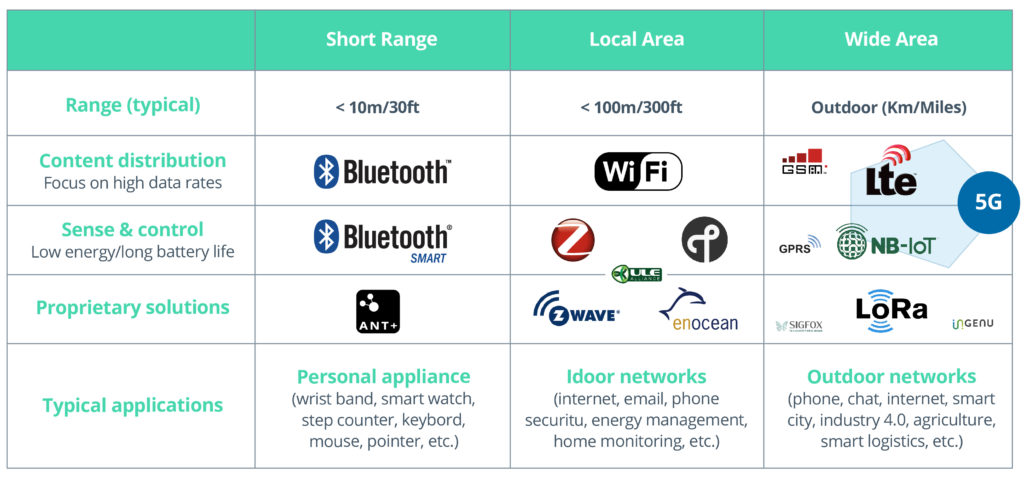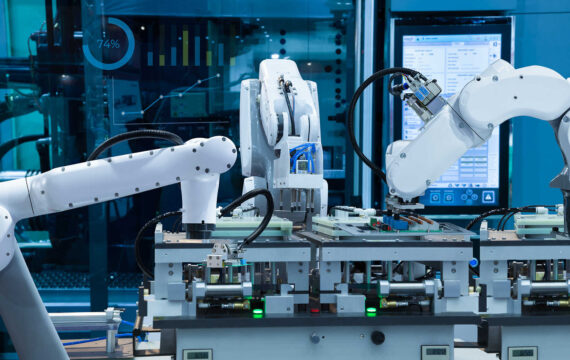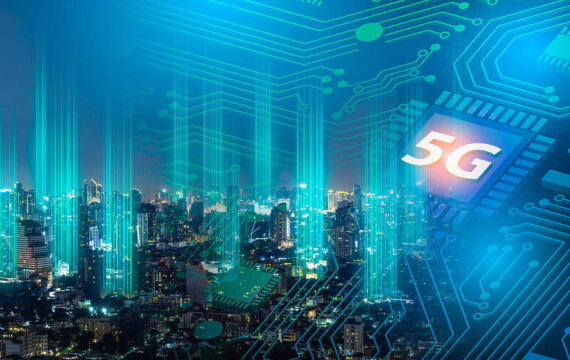The Internet of Things (IoT) ecosystem is growing at a breathtaking pace. Intel expects there to be 200 billion connected devices by 2020, amounting to around 26 smart objects for every human being on the planet. However, despite this overwhelming presence of IoT in almost every aspect of life and the outstanding opportunities it offers to businesses, many people are confused by the term itself as well as basic building blocks of IoT – the components required to establish a reliable architecture for IoT deployments and applications.
From the technological perspective, the Internet of Things is a network of uniquely identifiable objects (or “things”) that are capable of communicating with each other through some kind of connectivity without any human interaction. Let’s clarify exactly what are the building blocks of IoT and what things are needed to create this interconnected environment and empower physical entities with digital intelligence.
The IoT building blocks or the fundamental tiers of IoT architecture
As IoT platform building blocks are very diverse in terms of industry-specific use cases, there’s no iconic IoT architecture that can fully address all possible applications. The most widely used technical building blocks of IoT architecture contain three layers:
- The perception layer, the purpose of which is to interact with the physical world via basic building blocks of IoT devices augmented with sensors and actuators
- The network layer, which is intended to conduct superficial analysis of data captured by sensors using IoT gateways and transmit that data to a server for further processing over specific communication protocols
- The application layer, which is responsible for the interconnection between the previous two hardware-related layers and business applications to deliver application-specific services to end users

Source: NetBurner
The basic building blocks of an IoT device are considerably more than just a set of sensors and actuators. Within the concept of the Internet of Things software development, these devices are connected into a single network with analytical and managerial systems to enable data-driven decision-making and automated device management. Let’s get a proper understanding of what the role of each architectural element is and how the IoT system building blocks are combined to complete the IoT puzzle.

IoT sensors
The practice of collecting and analyzing data on a particular object using sensors is nothing new. A variety of sensors have been used across industries for years, specifically in vehicles, buildings, industrial facilities, and factories, where they have deservedly become the backbone of industrial automation.
The greatest thing about sensors is their ability to convert information from the surrounding environment into data suitable for further processing and analysis. In fact, anything referred to as “smart” is built upon sensing devices.

Source: SPG Controls
Data collected by sensors can have varying degrees of complexity, ranging from something as simple as a temperature or humidity reading to as complex as video transmission. Depending on the use case, a standalone sensor can be used or multiple sensors can be bundled into a group or embedded into a device (such as a smartphone or camera) to provide more comprehensive data, becoming basic building blocks of IoT devices.
IoT actuators
Both sensors and actuators are transducers, which means they’re responsible for converting signals from one form to another. Yet unlike sensors, which are aimed at tracking data that comes from a device, actuators are responsible for performing actions. Actions can be, for instance, switching a light on or off, generating a sound, or locking a door. Typically, sensors and actuators work together to remotely monitor and control physical processes or systems. In this setup, however, sensors and actuators are only endpoints that connect physically to the environment, whereas analysis of the information they collect happens in a control layer, commonly referred to as an IoT gateway.

Source: Progressive Automations
IoT gateways
An IoT gateway is a device that’s used for basic analysis of data coming from connected sensors. In some cases, when data analysis requires a small amount of computing resources, IoT gateways can serve as decision points, sending certain control commands to actuators which, in turn, perform appropriate actions. If more sophisticated data processing is needed or information is to be stored for further analysis, gateways send it to a server located either on-premises or in the cloud.
Both microcomputers and microprocessors can be used as gateways for IoT applications, with the most widely used being open-source platforms such as Raspberry Pi and Arduino.

IoT connectivity
Now that it’s clear what basic building blocks of an IoT device are used to create the IoT infrastructure, let us move on to how they interact with each other and the cloud environment or physical data centers.
End devices and servers can be connected in various ways: via cellular or satellite networks, Wi-Fi, Bluetooth, low-power wide-area networks (LPWAN), as well as Ethernet (wired LAN).

Source: Microcontroller Tips
Major considerations when deciding on a particular connectivity option include range, bandwidth, power consumption and, of course, cost. However, regardless of which connectivity method you choose, they all accomplish the same task – getting data to the server, be it in the cloud or on-premise.

IoT platforms
An IoT platform is middleware between the hardware-related layers of an IoT ecosystem, on the one hand, and the application layers, on the other. It’s a multi-tiered technology that helps to collect, store, process, and visualize data, as well as integrate it with other parts of the value chain, such as the cloud or end-user app. Additionally, it takes care of cross-device compatibility and scalability and has out-of-the-box features that accelerate application development. An IoT platform helps to manage connected devices using various protocols, configurations, and network topologies and even conducts over-the-air firmware updates.

Source: Kaa Project
There are loads of IoT platforms for any taste, budget, and needs. According to Statista, Microsoft Azure, Google Cloud, and Amazon Web Services are among the top platforms used to run connected devices in software projects. However, choosing one of the market giants doesn’t guarantee your project’s success. In most cases, IoT platforms are tailored for specific industries or focus on a certain type of device — for example, beacons, smart watches, or even augmented reality headsets. Picking the right platform is crucial to addressing the needs of your business. In making your choice, you should start with defining your IoT strategy, the kinds of problems you’re going to solve, and the results you want to achieve.
IoT platform building blocks explained
Having understood what the basic building blocks of IoT are, it’s obvious that the combination of these elements may vary from project to project. What’s important is to not lose track of your business goals, as the core of any technical building blocks of IoT solution is turning raw data into actionable insights and value. As for the technology part, it’s more effective to partner with a reliable provider of IoT solutions to help you deal with a variety of factors affecting IoT architecture.
Contact us in case you’re looking to implement IoT system building blocks or IoT technology into your business solution.




